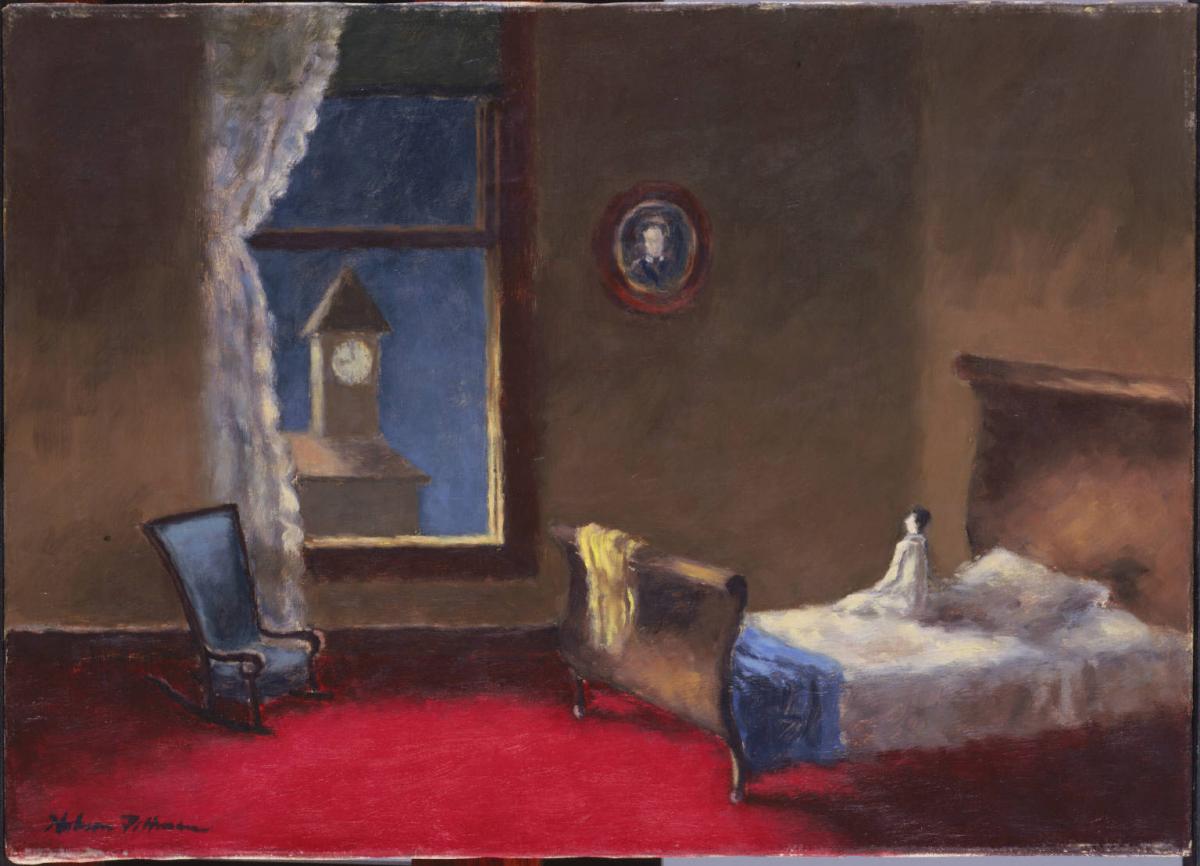Nine P.M.
Hobson Pittman ( c. 1939 )

Hobson Pittman’s works strongly evoke pure feelings for a bygone era. Having been raised in a large, rambling plantation house filled with floor-length windows, high ceilings, and Victorian furniture, Pittman often painted scenes reminiscent of such places. He wrote, “I have always been interested in painting things of the past, things I loved and still do. Things I feel and understand.” Nine P.M. is a response to something recalled for its familiarity, not its uniqueness. Pittman remembered “how the beds in these North Carolina homes were pulled out in the middle of the rooms on hot, summer nights…. I recall with what fascination, at an early age, I watched my sisters and my aunts strolling around the bedrooms in their long, white night gowns.”
The mood in Nine P.M. is one of quiet anticipation. The scene is quite simple in its arrangement and set-up: a woman, engulfed on the overs-sized bed, a window revealing a building across the street, a lone armchair, and a single decoration of a portrait on the wall. The bedroom and its furniture have more presence than the figure, revealing Pittman’s fascination for interior spaces. The artist wrote, “Rooms are wonder for me—I like rooms and doors and windows—Mystery shrouds them all—mystery not revealed or explained…” Pittman plays the certainty of the hour against the feeling of suspended time, underscoring the painting’s equivocal meaning. Dan Miller identified the bed as a continuing symbol in Pittman’s art of birth, dream, and regeneration, as “a beginning and an ending, an emergence into the stream of life and a going home.” Nine P.M. has many possible interpretations. Pittman made his painting memorable by allowing the viewers to reach their own personal conclusions.
Duncan Phillips responded strongly to Pittman’s art and eventually got to know the painter. He once described Pittman as “one of our best American painters…a genial kindly humanist whose poetic nostalgic landscapes and interiors have already won for him a high professional standing.”